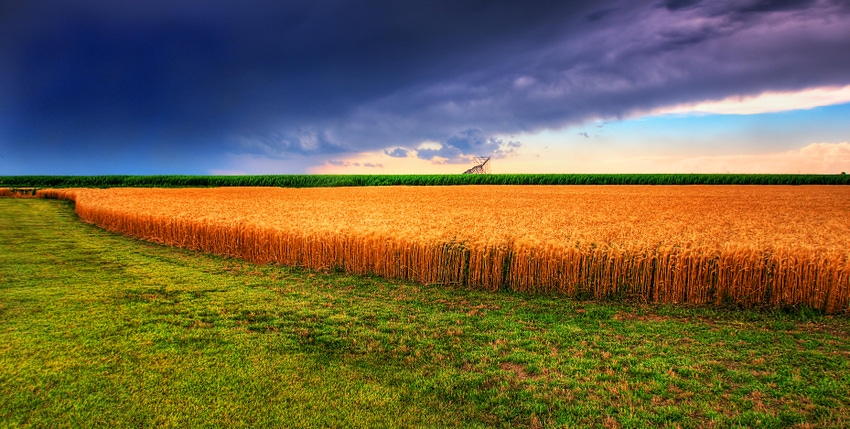Meteorologist warns about social media weather pessimism.
January 12, 2017

The impact of social media is going far beyond sharing the latest cute pet videos or what President-elect Donald Trump is saying on Twitter. Case in point: Viral weather stories are influencing farmers' decisions and the price they may receive for their corn and soybeans. That’s according to Advantage Weather Solutions agricultural meteorologist Ryan Martin, who spoke at a workshop during the American Farm Bureau Federation’s 2017 Annual Convention & IDEAg Trade Show in Phoenix, Ariz.
Martin provided a look ahead at what weather conditions will be like for much of the country but warned farmers not to get carried away by the hype they may come across on Facebook or Twitter. He highlighted recent posts showing extreme dry and wet conditions in Brazil that suggested that farmers there were in a world of trouble. Experts have credited price spikes and dips to these viral localized weather stories, despite the fact that they were not as influential as people believe.
“Everything is worse when you see it on Twitter. It is a breeding ground for pessimism,” Martin said. “These are agriculture feeds trying to give you information. You would think this is the status where nothing is going right.”
Martin warned that social media does not make for a good marketing tool when farmers are looking for the best times to sell or basing decisions on global weather events. However, he did acknowledge that markets today are greatly influenced by weather and their ultimate impact on supply and demand. He encouraged farmers to take a look at weather patterns, particularly in the Southern Hemisphere, during winter months.
“What is happening in South America then is a lot more important than our weather in November. South American weather is the second-leading driver of these markets. That is the world stage that we are on,” he said.
As for Martin’s predictions for 2017 weather in the U.S., he believes growing conditions for corn, soybeans and wheat will not be as favorable as they were over the past two years.
“I’m actually looking at a year where more heat creeps in, probably over the entire country,” he said. "Will it be global warming doom and destruction? No, but it will be warmer. We are going to see more heat stress over the corn growing area, and I’m also a bit concerned about the central and southern Plains."
Martin said indicators suggest that some areas will be moisture starved, but there will still be large discrepancies in moisture with the “haves versus the have-nots.” He predicts slightly lower precipitation in the heart of the Corn Belt, down through the deep South and into the Plains. The only exception, he said, is the Upper Midwest area of Minnesota, Wisconsin and into northern Michigan. Of course, more accurate predictions may be a few months away, he added.
Martin’s suggestion for farmers who are bombarded with weather information, particularly on social media, is to not buy into weather sensationalism. He encouraged attendees to listen to experts they know, especially when it comes to making important marketing decisions.
He said he is also is a believer in using risk management tools and paid subscriber-based weather feeds.
Finally, Martin said, farmers should take an active role in marketing their crops and not to leave it up to others. All of these things may help protect farmers from wide market swings or missing out because they don’t have a full grasp of weather impacts at home or abroad.
“Everyone has an opinion. Make sure you own what happens to your bottom line,” Martin concluded.
You May Also Like



